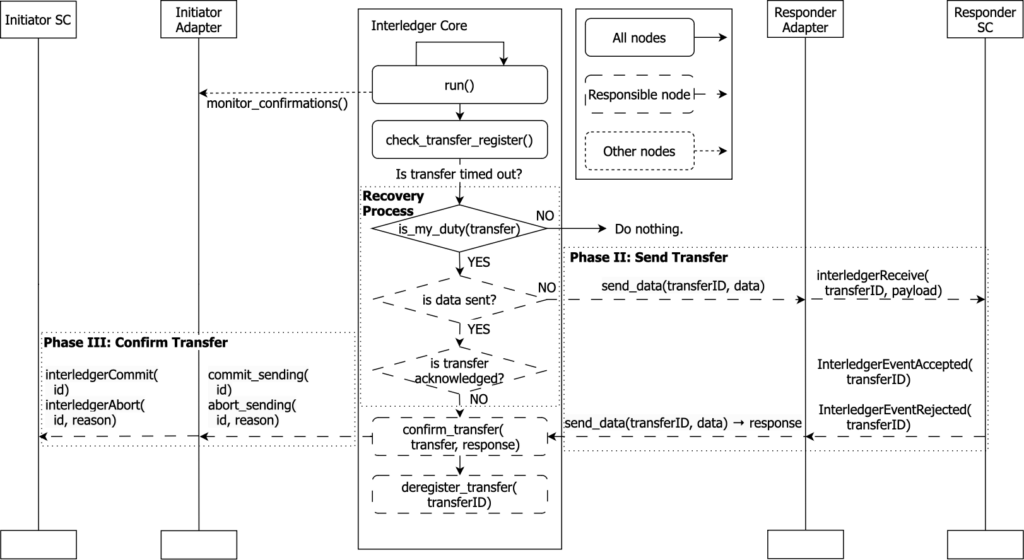Blockchains and other Distributed Ledger Technologies (DLTs) have enabled many new applications, particularly in the area of financial operations, but increasingly also in other areas. However, each blockchain and ledger type is always a compromise between different desirable properties, so no single ledger is able to meet the requirements of all use cases. As an example, Bitcoin is a reliable payment solution, but it is also expensive to use and does not offer all the throughput and functionality that e.g. Hyperledger Fabric can muster – and for its part, Fabric has no payment solution. But if one could easily utilise multiple ledgers in a system, one could mostly overcome the limitations of individual ledgers by utilising ledgers that suitably complement each other.
Interledger technologies provide the means for linking different ledgers. There are several different interledgers available, but most either focus only on particular application types (specifically, there are several payment-oriented interledgers) or only support a limited set of ledgers. To overcome these limitations, the EU H2020 project SOFIE developed a bridge-type interledger that is application agnostic (so it supports most application types) and can be adapted to support most ledger. But it has a key limitation: the design is centralised, which means that all users of the service must trust the party running the interledger. This is not a problem, if the service is used e.g. inside an organisation that has a high internal trust level, but it significantly limits its utility in providing interledger services for actors that have only a low level of trust.
The DLTs have addressed this same trust problem by decentralising the ledger operations so that it is run by multiple parties, who actively monitor each other. The IoT-NGIN project has now utilised this same approach to develop the Decentralised Interledger Bridge (DIB), which provides the same functionality as the SOFIE solution, but is internally fully decentralised. Each DIB Bridge consists of 1-N independent nodes that collaborate to offer the interledger service. Having more nodes not only increases the throughput of the Bridge but also increases resiliency as the nodes act as each others’ backups, so if a node e.g. suddenly crashes, one of the other nodes will automatically take over the crashed node’s activities. Finally, if the nodes are run by different parties, we now also benefit from increased trustworthiness as the service is provided by the whole consortium of parties, not by a single actor.
With DIB, everyone is free to use any available DIB Bridge or run one by themselves as there is no limit to how many Bridges can be run nor any requirement to e.g. register the Bridge anywhere, just install it and enjoy! With DIB, it’s now possible to build trustworthy high-volume applications across multiple ledgers to truly unlock the potential of blockchains and distributed ledgers – the code is freely available so try it out already today!

